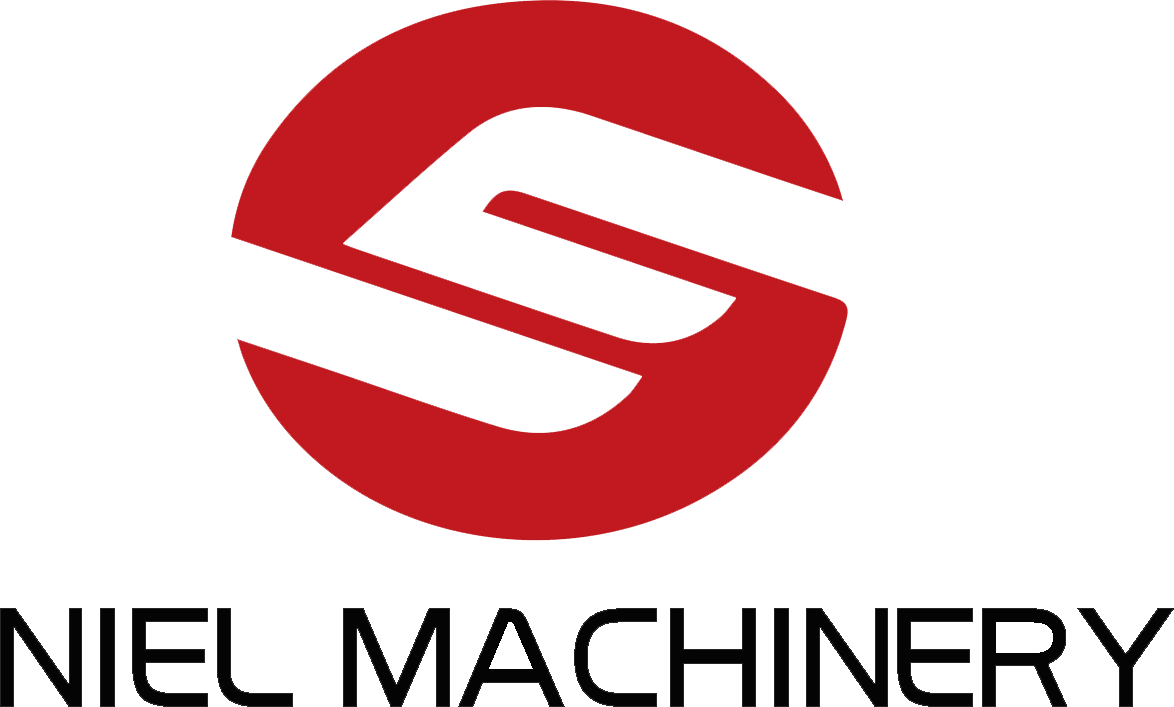Exploring the Dynamic Capabilities of Industrial Ribbon Mixers: Revolutionizing Manufacturing Efficiency
Release time:
2025-05-20 09:00
Source:
Exploring the Dynamic Capabilities of Industrial Ribbon Mixers
Table of Contents
- Introduction to Industrial Ribbon Mixers
- Understanding the Mechanics of Ribbon Mixers
- Advantages of Using Ribbon Mixers in Manufacturing
- Applications of Ribbon Mixers Across Industries
- Maintaining Your Ribbon Mixer for Longevity
- Future Trends in Ribbon Mixer Technology
- Case Studies: Ribbon Mixers in Action
- Frequently Asked Questions
- Conclusion
Introduction to Industrial Ribbon Mixers
Industrial ribbon mixers are essential equipment in the manufacturing landscape, known for their efficient blending capabilities. These machines are designed to mix a wide variety of materials, from powders to granules, ensuring uniformity and consistency in the final product. Understanding the dynamic capabilities of ribbon mixers is crucial for manufacturers aiming to optimize their production processes.
Ribbon mixers utilize an innovative design featuring a ribbon-shaped agitator that rotates within a U-shaped trough. This configuration allows for thorough mixing of materials, minimizing the risk of segregation and achieving homogenous blends. Their versatility and efficiency make ribbon mixers an ideal choice for industries such as food processing, pharmaceuticals, chemicals, and construction materials.
Understanding the Mechanics of Ribbon Mixers
The Design and Functionality of Ribbon Mixers
At the core of the ribbon mixer’s functionality is its unique design. The ribbon, which typically comes in double or single configurations, consists of helical blades that move materials in both directions. This dual movement ensures that materials are not only mixed but also transported along the length of the trough, enhancing processing speed and efficiency.
How Ribbon Mixers Operate
The operation of a ribbon mixer involves several key stages:
1. **Loading**: Materials are introduced into the mixer, and the machine is sealed to prevent contamination.
2. **Mixing**: As the ribbon rotates, it creates a flow that moves the materials through the mixing chamber. The design allows for effective shear forces, which further break down clumps and ensure a thorough mix.
3. **Discharge**: Once mixing is complete, the mixture is discharged through an outlet, often controlled by a valve that regulates flow rates.
By understanding these mechanics, manufacturers can better appreciate how ribbon mixers can significantly improve their mixing processes.
Advantages of Using Ribbon Mixers in Manufacturing
Enhanced Mixing Efficiency
One of the primary advantages of ribbon mixers is their ability to achieve uniform mixing quickly. The innovative design allows for short mixing times, reducing production cycles and leading to increased output.
Versatility in Material Handling
Ribbon mixers can handle a wide range of materials, including powders, granules, and even some liquids. This versatility makes them suitable for various applications across different industries, from food production to chemical manufacturing.
Low Maintenance Costs
Unlike other mixing technologies, ribbon mixers have fewer moving parts, which often translates to lower maintenance costs. Regular cleaning and occasional lubrication are typically sufficient to keep these machines in optimal working condition.
Energy Efficiency
Given their effective design, ribbon mixers generally consume less energy compared to other mixing solutions. This energy efficiency not only lowers operating costs but also contributes to sustainable manufacturing practices.
Applications of Ribbon Mixers Across Industries
Food Industry
In the food industry, ribbon mixers are commonly used for blending dry ingredients, such as flour and sugar. Their capacity to mix without generating excessive heat makes them ideal for temperature-sensitive materials.
Pharmaceuticals
Pharmaceutical manufacturers rely on ribbon mixers for consistent blending of powders and granules used in drug formulations. The precision and reliability of ribbon mixers help ensure compliance with stringent regulatory standards.
Chemical and Plastics
The chemical sector utilizes ribbon mixers to blend various compounds, including resins and additives. Their ability to handle both dry and wet materials makes them a versatile choice in this field.
Construction Materials
In the construction industry, ribbon mixers are employed for mixing aggregates, cement, and additives. Their robust design allows for large batch processing, essential for construction projects.
Maintaining Your Ribbon Mixer for Longevity
Regular Inspections
To ensure optimal performance, regular inspections of ribbon mixers are essential. Check for wear and tear on the ribbon, trough, and drive system. Early detection of issues can prevent costly repairs.
Cleaning Protocols
Developing a cleaning protocol is critical, especially in industries where product purity is paramount. This includes thorough cleaning after each batch to prevent cross-contamination and maintain product quality.
Lubrication and Parts Replacement
Regular lubrication of moving parts minimizes friction and wear. Additionally, adhere to a schedule for replacing worn components to avoid machine downtime.
Future Trends in Ribbon Mixer Technology
Advanced Automation
As industries move towards Industry 4.0, the integration of automation technologies into ribbon mixers is becoming more common. Smart sensors and automated controls can provide real-time monitoring of mixing processes, enhancing efficiency and accuracy.
Adaptations for Sustainability
Sustainability is a growing concern in manufacturing. Future ribbon mixers may incorporate designs that reduce waste and energy consumption, aligning with green manufacturing initiatives.
Modular Designs
Modular ribbon mixers offer flexibility, allowing manufacturers to expand or modify their mixing capabilities without investing in entirely new machines. This adaptability is increasingly important in a fast-evolving market.
Case Studies: Ribbon Mixers in Action
Case Study 1: A Food Processing Plant
In a food processing facility, the implementation of ribbon mixers reduced mixing times by 50%, significantly increasing productivity. The quality of the final products improved, leading to a decrease in customer complaints.
Case Study 2: Pharmaceutical Manufacturer
A pharmaceutical manufacturer integrated ribbon mixers into their production line, enhancing the consistency of their drug formulations. This change not only met regulatory standards more easily but also improved overall production efficiency.
Frequently Asked Questions
1. What materials can be mixed using ribbon mixers?
Ribbon mixers can handle a wide variety of materials, including powders, granules, and some liquids, making them versatile across multiple industries.
2. How long does the mixing process typically take?
Mixing times vary based on the material and batch size but generally range from a few minutes to several hours, depending on the desired homogeneity.
3. What maintenance is required for ribbon mixers?
Regular inspections, cleaning, and lubrication of moving parts are essential to maintain optimal performance and extend the life of the equipment.
4. Are ribbon mixers suitable for heat-sensitive materials?
Yes, ribbon mixers are ideal for heat-sensitive materials as they generate minimal heat during the mixing process.
5. How can we improve the efficiency of our existing ribbon mixers?
Consider integrating automation technologies, optimizing loading procedures, and regularly maintaining the equipment to enhance overall efficiency.
Conclusion
In conclusion, industrial ribbon mixers are pivotal in modern manufacturing, offering unmatched efficiency and versatility across numerous applications. By understanding their mechanics, advantages, and evolving technology, manufacturers can harness the full potential of ribbon mixers to enhance productivity and maintain competitive advantages. As the industry continues to innovate, staying abreast of trends and best practices will ensure that businesses optimize their operations effectively with ribbon mixers. Embracing these dynamic capabilities not only elevates manufacturing processes but also sets the stage for future advancements in the industry.
Related News
Boosting Efficiency: Semi Automatic Powder Filling Machine in Action
Boosting Efficiency: Semi Automatic Powder Filling Machine in Action Table of Contents 1. Introduction to Semi Automatic Powder Filling Machines 2. What is a Semi Automatic Powder Filling Machine? 3. How Does a Semi Automatic Powder Filling Machine Work? 4. Benefits of Semi Automatic Powder Filling Machines 5. Applications of Semi Automatic Powder Filling Machines 6. Maint
Understanding Semi-Automatic Powder Filling Machines: A Comprehensive Overview
Semi-automatic powder filling machines are pivotal in the packaging sector, particularly for businesses handling powdered products such as spices, flour, chemicals, and pharmaceuticals. These machines bridge the gap between manual filling methods and fully automatic systems, offering businesses an optimal solution for efficiency and precision. One of the primary advantages of semi-automatic powder
The Evolution of Mixing Machinery: Horizontal Paddle Mixers at the Forefront
The Evolution of Mixing Machinery: Horizontal Paddle Mixers at the Forefront Table of Contents 1. Introduction to Mixing Machinery 2. A Brief History of Mixing Machinery 3. Technological Advancements in Mixing Machinery 4. Understanding Horizontal Paddle Mixers 5. Applications of Horizontal Paddle Mixers 6. Advantages of Horizontal Paddle Mixers 7. The Future of Mixing Machinery 8
The Essential Guide to Horizontal Paddle Mixers: Applications and Benefits
Horizontal paddle mixers are vital components in various manufacturing and processing operations, particularly within the realm of mixing machinery. Understanding the workings and benefits of these mixers can significantly enhance operational efficiency and product quality. A horizontal paddle mixer typically features a cylindrical mixing chamber equipped with paddles that rotate on a horizontal a
Exploring the Dynamic Capabilities of Industrial Ribbon Mixers Table of Contents Introduction to Industrial Ribbon Mixers Understanding the Mechanics of Ribbon Mixers Advantages of Using Ribbon Mixers in Manufacturing Applications of Ribbon Mixers Across Industries Maintaining Your Ribbon Mixer for Longevity Future Trends in Ribbon Mixer Technology Case Studies: Ribbon Mixers in Act
Understanding Industrial Ribbon Mixers: Essential Tools for Effective Material Blending
Industrial ribbon mixers are vital pieces of equipment used in various manufacturing processes, particularly in the blending of powdered and granular materials. These mixers are characterized by their unique design, featuring a set of helical ribbons that move materials through the mixing chamber, ensuring a thorough and uniform blend. With increasing demands for consistency and quality in product




















